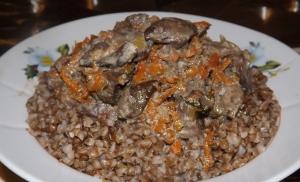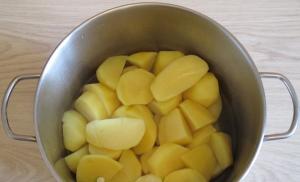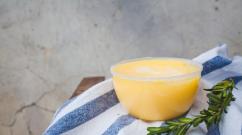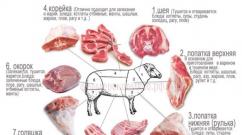Classification of fixed assets. Types (groups) of fixed assets
Classifier of fixed assets by depreciation groups 2016 year is needed to correctly display depreciable fixed assets(abbreviated as OS) in accounting. About aspects classification of fixed assets 2016 year, read on.
What is an OS classifier?
Used when searching for depreciation groups Classifier of fixed assets 2016 year is provided by the Decree of the Government of the Russian Federation “On the classification of fixed assets included in depreciation groups” dated 02/01/2002 No. 1 with the latest amendments established by the Decree of the Government of the Russian Federation “On amendments to the classification of fixed assets” dated 07/06/2015 No. 674. The classification of depreciation groups is formed according to information from All-Russian Classifier of Fixed Assets (abbreviated as OKOF) OK 013-94, established by Decree of the State Standard of the Russian Federation dated December 26, 1994 No. 359.
IMPORTANT! On January 1, 2017, the OK 013-2014 classifier, approved by the order of Rosstandart “OK 013-2014 (SNS 2008), begins to function. OKOF" dated December 12, 2014 No. 2018-st. Classifier OK 013-94 will become invalid.
Replacing the old OKOF with a new one will entail reform classifier of fixed assets by depreciation groups.
The principle of constructing depreciation groups of fixed assets of the classifier
Construction depreciation groups of fixed assets of the classifier is based on establishing a period of effective use of the OS. The classifier presents 10 groups, ranging from OS with a period of application of 1-2 years and ending with OS with a period of application of more than 30 years. Each group contains a detailed list of operating systems indicating their name and encoding, taken from the OKOF directory. Classification using generally established coding greatly facilitates the processing of OS information during their automated recording.
Use in determining the useful life of fixed assets of the 2016 classifier
Useful lives of fixed assets classifier records as a specific time range. In particular, according to the 2nd depreciation group of fixed assets V 2016 year, the useful life (abbreviated as SPI) is represented in the range of 2-3 years, and it cannot be equal to exactly 2 years, but it can be set at 3 years.
Determining the exact size of the SPI is made by enterprise managers independently and often depends on the profitability of the activity being carried out. With high profitability, organizations try to write off depreciation costs faster and choose a shorter SPI for this. For the 2nd depreciation group discussed above, the shortest SPI will be 25 months. In case of low profitability or loss-making activities, it is recommended to choose the maximum SPI, which in this case is equal to 36 months.
How is the classification of enterprise fixed assets included in depreciation groups made?
Before searching for a depreciation group, they check whether the property belongs to the fixed assets.
Signs of classifying a property object as OS:
- The property is intended to be used in business activities to obtain financial benefits.
- The period of planned use of the object is more than a year.
- There are no plans to resell the property in the near future.
If the property meets all of the above conditions, proceed to the search for a depreciation group. However, according to the classifier established by Decree of the Government of the Russian Federation dated February 1, 2002 No. 1, finding the required OS group is quite difficult and time-consuming, so it is better to initially determine its OS code through the OKOF directory.
Example
Exclusive Photo LLC, which is engaged in the creation and sale of unique photographs, at the beginning of 2016 acquired professional cameras for business activities.
We determine the depreciation group to which the cameras belong. To do this, open the OKOF directory, find the section “Machinery and Equipment” and look at the code for the subsection “Photo and film equipment” - 143322000.
After determining the classification code of cameras, we move on to the classifier established by Decree of the Government of the Russian Federation dated February 1, 2002 No. 1. In this classifier, code 143322000 is included in the 3rd depreciation group of fixed assets (SPI over 3 and up to 5 years). Further, the head of Exclusive Photo LLC, based on the established range, has the right to decide for himself what the depreciation period of the cameras will be.
The considered option for determining depreciation groups is recommended to be used only in the absence of automated accounting in small enterprises with a small number of depreciable objects.
Organizations with a large range of operating systems use programs for automated accounting of business transactions with installed classifiers. The classification of fixed assets by depreciation groups in such cases is carried out automatically when reflecting transactions related to the capitalization of fixed assets, and a specific SPI by category of fixed assets is entered in accordance with the accounting policy approved by the enterprise.
IMPORTANT! IN depreciation groups of fixed assets 2015 year, the subsection “Photo and film equipment” was included as a component of the 5th depreciation group (SPI 7-10 years). By Decree of the Government of the Russian Federation dated July 6, 2015 No. 674, this subsection was transferred to the 3rd depreciation group (SPI 3-5 years).
Features of accounting for 1st and 2nd depreciation groups of fixed assets
According to the provisions established by the Law “On Amendments to the Tax Code of the Russian Federation” dated November 24, 2014 No. 366-FZ for fixed assets belonging to the 1st and 2nd depreciation groups, from the beginning of 2015 property tax is not calculated (subclause 8 clause 4 of article 374 of the Tax Code of the Russian Federation).
IMPORTANT! Movable fixed assets, taken into account by the taxpayer from January 1, 2013, from the category of non-taxable fixed assets, from the beginning of 2015, were transferred to the category of preferential fixed assets, exempt from taxation (clause 25 of article 381 of the Tax Code of the Russian Federation). This category includes all movable fixed assets belonging to depreciation groups 3-10.
Example (continued)
In the same year, Exclusive Photo LLC acquired personal computers (abbreviated as PCs) for photo processing. According to the classifier, PCs belong to the item “Electronic computer equipment” with code 143020000, which is part of the 2nd depreciation group.
When calculating property tax, the cost of a PC is not included in the tax base and is recorded in the declaration for this tax in section. 2 consisting of pages 170 and 270.
Professional cameras that are movable fixed assets (clause 2 of Article 130 of the Civil Code of the Russian Federation), acquired after the beginning of 2013, are classified as preferential fixed assets, the cost of which is not included in the tax base for property tax. In the property tax return, the residual value of professional cameras is displayed in section. 2 in gr. 4 on pp. 20-140 and as part of pp. 170 and 270.
For aspects of reflecting non-taxable fixed assets in the NNI declaration, see the article.
Results
The classification of fixed assets by depreciation groups is formed on the basis of the OKOF directory and is intended for the taxpayer to establish the period for using fixed assets for the purpose of their tax accounting and to determine whether fixed assets are subject to property tax or not.
By increasing depreciation deductions, this is a rather risky and time-consuming method of tax optimization. At the same time, practice shows that many manage to increase the amount of depreciation deductions (or reduce the initial cost of the object) and thereby save income tax. Let's consider what saving methods allow organizations to reduce income tax through depreciation and how risky their use is from a tax point of view in the article "Five simple ways to reduce income taxes through depreciation."
The accountant determines it himself based on the useful life of the object using the formula:
Please note: since depreciation rates are determined depending on the useful life of the object, and such a period is determined by the so-called depreciation groups, in our table the initial indicator is the depreciation group - this will make it easier for you to use the table.
Estimated depreciation rates for fixed assets by depreciation groups
Depreciation group |
Useful life of a fixed asset in years |
Useful life of a fixed asset in months |
Annual depreciation rate for accounting purposes (linear method, reducing balance method), % |
Monthly depreciation rate for tax accounting purposes (linear method), % |
|---|---|---|---|---|
|
The first group is all short-lived property with a useful life from 1 year to 2 years inclusive |
||||
|
The second group is property with a useful life of more than 2 years up to 3 years inclusive |
||||
|
Third group - property with a useful life of more than 3 years up to 5 years inclusive |
||||
|
Fourth group - property with a useful life of more than 5 years up to 7 years inclusive |
||||
|
Fifth group - property with a useful life of over 7 years up to 10 years inclusive |
||||
|
Sixth group - property with a useful life of over 10 years up to 15 years inclusive |
||||
|
Seventh group - property with a useful life of over 15 years up to 20 years inclusive |
||||
|
Eighth group - property with a useful life of over 20 years up to 25 years inclusive |
||||
|
Ninth group - property with a useful life of over 25 years up to 30 years inclusive |
||||
|
Tenth group - property with a useful life of over 30 years |
Name: All-Russian Classifier of Fixed Assets Abbreviation: OKOF Designation: OK 013-2014 (SNS 2008) In English: Russian classification of fixed assets Responsible: Rosstekhregulirovanie Reason: Order of Rosstandart dated December 12, 2014 No. 2018-st Date of introduction: 01/01/2017 Date endings: not set (there is no order to cancel the classifier or replace it with a new one) Last change: No. 5, effective from July 1, 2018 Reason for change: Order of Rosstandart dated 05/08/2018 No. 225-st Adopted to replace OKOF OK 013-94.
Harmonization of OKOF with SNA 2008
OKOF OK 013-2014 was developed on the basis of harmonization with the System of National Accounts (SNA 2008) of the United Nations, the European Commission, the Organization for Economic Cooperation and Development, the International Monetary Fund and the World Bank Group. This means that the new OKOF, introduced on January 1, 2017, uses the classification of fixed assets accepted in international practice. Below is a table of correspondence between OKOF codes and SNA 2008 designations.
| SNA 2008 | OKOF | ||
|---|---|---|---|
| Designation | Code | Name of types of fixed assets | |
| AN111 | Residential buildings | 100 100.00.00.00 | Residential buildings and premises |
| AN112 | Other buildings and structures | 200 200.00.00.00.000 | Buildings (except residential) and structures, expenses for land improvement |
| AN1121 | Non-residential buildings | 210 210.00.00.00.000 | Buildings (except residential) |
| AN1122 | Other buildings | 220 220.00.00.00.000 | Facilities |
| AN1123 | Land Improvements | 230 230.00.00.00 | Expenses for land improvement |
| AN113 | cars and equipment | 300 300.00.00.00.000 | Machinery and equipment, including household equipment, and other objects |
| AN1131 | Transport equipment | 310 310.00.00.00.000 | Vehicles |
| AN1132 | 320 320.00.00.00.000 | Information, computer and telecommunications (ICT) equipment | |
| AN1133 | Other machines and equipment | 330 330.00.00.00.000 | Other machinery and equipment, including household equipment, and other objects |
| AN114 | Weapon systems | 400 400.00.00.00 | Weapon systems |
| AN115 | 500 500.00.00.00.000 | Cultivated biological resources | |
| AN1151 | Resources of animals that produce products on a regular basis | 510 510.00.00.00.000 | Cultivated animal resources that produce products repeatedly |
| AN1152 | Resources of trees, crops and plantings that produce products on a regular basis | 520 520.00.00.00 | Cultivated resources of plant origin that produce products repeatedly |
| AN116 | Costs associated with transferring ownership of non-produced assets | 600 600.00.00.00 | Costs of transferring ownership of non-produced assets |
| AN117 | Intellectual Property Products | 700 700.00.00.00 | Intellectual property objects |
| AN1171 | 710 710.00.00.00 | Research and Development | |
| AN1172 | Exploration and evaluation of mineral reserves | 720 720.00.00.00 | Expenses for subsoil exploration and assessment of mineral reserves |
| AN1173 | Computer software and databases | 730 730.00.00.00 | Software and Databases |
| AN11731 | Computer software | 731 731.00.00.00 | Software |
| AN11732 | Database | 732 732.00.00.00 | Database |
| AN1174 | Original entertainment, literary and artistic works | 740 740.00.00.00 | Original works of entertainment, literature or art |
| AN1179 | Other intellectual property products | 790 790.00.00.00 | Other intellectual property |
Shock absorption groups
Fixed assets are divided into depreciation groups. The depreciation periods of material assets (the useful life of the property) are determined by depreciation groups. The groups use OKOF classifier codes. In the appendix to the Decree of the Government of the Russian Federation of January 1, 2002 No. 1, the classification of fixed assets included in depreciation groups was approved for the old OKOF OK 013-94, which has become invalid. In 2016, a new classification was introduced into the Resolution taking into account the codes of the new OKOF OK 013-2014. The classification groups are presented below. Use the form to search for a group of fixed assets and useful life by OKOF code.
Depreciation groups and useful lives. Search for groups by OKOF code online.
The fixed assets classifier serves to assign a depreciation period for material assets and uses codes from the All-Russian Classifier of Fixed Assets. For fixed assets put into operation since 2017, the useful life is determined by the codes of the new OKOF OK 013-2014. For fixed assets introduced before 2017, the terms are determined by the codes of the old OKOF OK 013-94. If, according to the new classifier, the fixed asset belongs to another group of the organization, then the terms do not change. For tax accounting, refer to clause 8, clause 4, article 374 of the Tax Code of the Russian Federation and clause 58, article 2 of the Law of November 30, 2016 No. 401-FZ.
Determination of depreciation group and useful life using the OKOF code:
Classification by one table in MS Excel format, 51Kb Download
Depreciation groups:
- The first group is all short-lived property with a useful life from 1 year to 2 years inclusive
- cars and equipment
- The second group is property with a useful life of more than 2 years up to 3 years inclusive
- cars and equipment
- Means of transport
- Perennial plantings
- Third group - property with a useful life of more than 3 years up to 5 years inclusive
- cars and equipment
- Means of transport
- Industrial and household equipment
- The fourth group is property with a useful life of over 5 years up to 7 years inclusive
- Building
- Facilities and transmission devices
- cars and equipment
- Means of transport
- Industrial and household equipment
- Working livestock
- Perennial plantings
- Fifth group - property with a useful life of over 7 years up to 10 years inclusive
- Building
- Facilities and transmission devices
- cars and equipment
- Means of transport
- Industrial and household equipment
- Sixth group - property with a useful life of over 10 years up to 15 years inclusive
- Facilities and transmission devices
- Dwellings
- cars and equipment
- Means of transport
- Industrial and household equipment
- Perennial plantings
- Seventh group - property with a useful life of over 15 years up to 20 years inclusive
- Building
- Facilities and transmission devices
- cars and equipment
- Means of transport
- Perennial plantings
- Fixed assets not included in other groups
- Eighth group - property with a useful life of over 20 years up to 25 years inclusive
- Building
- Facilities and transmission devices
- cars and equipment
- Vehicles
- Industrial and household equipment
- Ninth group - property with a useful life of over 25 years up to 30 years inclusive
- Building
- Facilities and transmission devices
- cars and equipment
- Vehicles
- Group ten - property with a useful life of over 30 years inclusive
- Building
- Facilities and transmission devices
- Dwellings
- cars and equipment
- Vehicles
- Perennial plantings
RESOLUTION
dated July 7, 2016 N 640
ON AMENDMENTS TO THE DECISION OF THE GOVERNMENT OF THE RUSSIAN FEDERATION OF JANUARY 1, 2002 N 1
The Government of the Russian Federation decides:
1. Approve the attached changes that are being made to the Decree of the Government of the Russian Federation of January 1, 2002 No. 1 “On the Classification of fixed assets included in depreciation groups” (Collected Legislation of the Russian Federation, 2002, No. 1, Article 52; 2003, N 28, art. 2940; 2006, no. 5028; 2009, no. 1128; , N 28, art. 4239).
2. This resolution comes into force on January 1, 2017.
In the work of each enterprise or organization, fixed assets are used, which are part of the organization’s property, used as a means of producing goods, services, work or any management needs of the enterprise for a long time. When an organization takes a fixed asset into account, its initial cost is determined based on the actual, objective costs of acquisition, manufacturing, construction, transportation, etc. excluding VAT.
To account for fixed assets during operation, their residual value is determined, which is the difference between the original cost and depreciation during operation.
As you know, all property owned by an enterprise depreciates and wears out over time. Depreciation of fixed assets is considered to be the transfer of part of the cost of fixed assets to the cost of products, works or services. Depreciation is calculated over the entire useful life of the object, i.e. the period of time during which the application and use of an item of fixed assets can bring economic benefits to the organization. Each enterprise can determine the useful life independently or use the classification of fixed assets developed on the basis of OKOF - the All-Russian Classifier of Fixed Assets.
Further, depending on this indicator - SPI - the fixed asset can be assigned to one of the depreciation groups. The Tax Code defines only ten depreciation groups, and the classification of fixed assets included in one or another group is, in turn, approved by the Government of the Russian Federation.
Such a concept as “depreciation group” is used both for tax accounting purposes for calculating income tax, and for accounting purposes. The definition of depreciation of fixed assets for tax and accounting purposes differs.
Each depreciation group establishes a clear interval expressed by its useful life. It must be remembered that the lower limit of the interval of each depreciation group begins with the word “over”, that is, the lower limit is not included in the interval, and the upper limit ends with the word “inclusive”, that is, this figure is included in the interval of the depreciation group. For example, the third depreciation group is determined by a period of over 3 years and up to 5 years inclusive. That is, a fixed asset for which the SPI is established as 3 years is included in the second group, and with a SPI of 3 years 1 month in the third, at the same time, a fixed asset with an established SPI of 5 years will still belong to the 3rd depreciation group.
For taxpayers who have a good profit, it is most beneficial to establish SPI as early as possible, which will make it possible to write off the cost of the object as expenses earlier. For example, for the same third depreciation group, it is most profitable to set the period to 3 years 1 month.
The concept of “depreciation group” is formulated in paragraph 1 of Article 258 of the Tax Code of the Russian Federation and is used mainly for tax accounting purposes.













